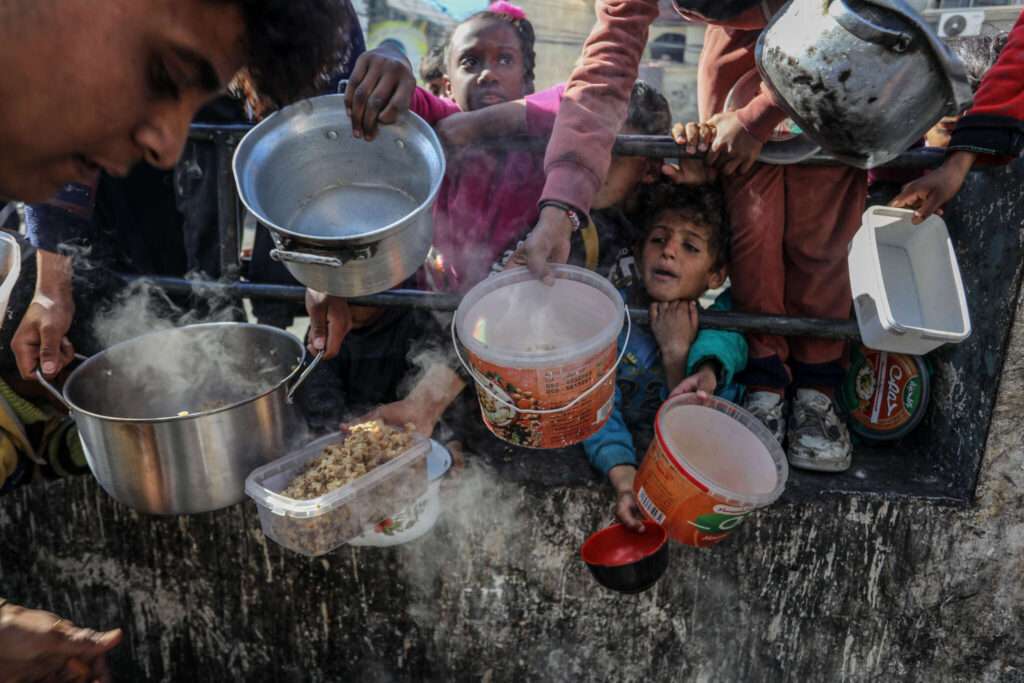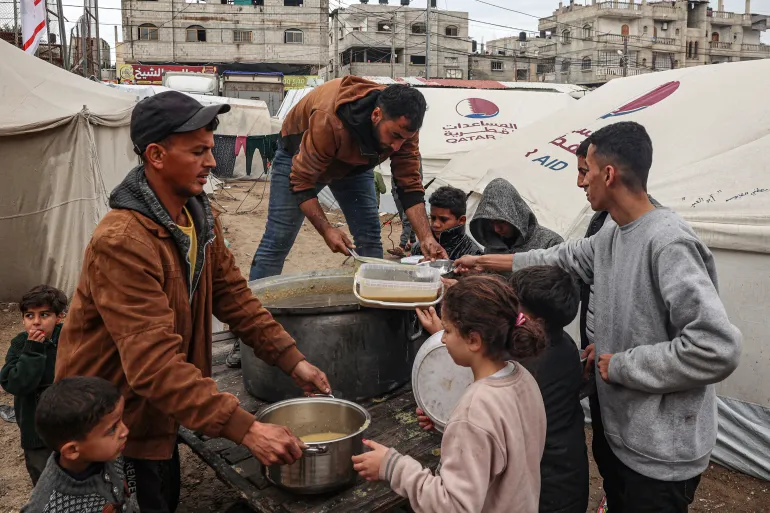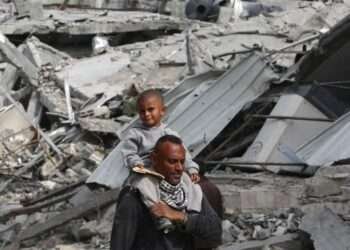United Nations International Children’s Emergency Fund (UNICEF) has warned of a looming spike in the rate of child deaths due to a worsening food crisis in the Gaza strip.
UNICEF Deputy Executive Director for Humanitarian Action, Ted Chaiban, said that the Gaza Strip is “poised to witness an explosion in preventable child deaths which would compound the already unbearable level of child deaths in Gaza.”
“We’ve been warning for weeks that the Gaza Strip is on the brink of a nutrition crisis,” Chaiban noted.
A report by the Global Nutrition Cluster (GNC), an aid partnership led by UNICEF, revealed that more than 90% of children under five in Gaza eat two or fewer food groups a day, known as severe food poverty.
In Gaza’s southernmost city of Rafah, where most humanitarian aid enters, the acute malnutrition rate is 5%, compared to 15% in northern Gaza, which has been isolated by the Israeli military and largely cut off from aid for months.

The report revealed that before the war the rate across Gaza was less than 1%.
The flow of humanitarian aid into the Gaza Strip has been severely restricted, and the GNC report said, “Analysis indicates a dire nutrition situation for the entire population of Gaza, both in the short and long term.”
“It is expected that all areas of Gaza will be affected by malnutrition, but governates receiving limited or no humanitarian assistance will be particularly impacted,” it added.
Also, the report stated that at least 90% of children under 5 are affected by one or more infectious disease and 70% have had diarrhoea in the past two weeks.
“81% of households lack safe and clean water, with average household access at less than one litre per person per day,” it added.
Results from the analysis suggest that the nutrition situation of women and children in Gaza is worsening, everywhere, but especially in Northern Gaza and Rafah.
In Northern Gaza, 1 in 6 children are acutely malnourished, with an estimated 3% facing the most severe form of wasting and requiring immediate treatment.
The report outlined two potential scenarios which it termed the “rapid decline scenario” and the “slow deterioration scenario,” both of which depend on the extent to which the spread of disease can be checked and the extent to which aid can be delivered.
Both scenarios, it said, will lead to “a consistent and constant rise in child wasting, maternal undernutrition, and micronutrient malnutrition.”
A Deadly Combination
Moreover, Dr Mike Ryan, Head of the WHO’s health emergencies programme stressed that hunger and disease are “a deadly combination.”
“Hungry, weakened and deeply traumatised children are more likely to get sick… It’s dangerous, and tragic, and happening before our eyes,” Ryan said.
Later, WHO accused Israel of hindering medical rescue missions to Nasser hospital. The organization disclosed in a statement that it led two life-saving missions to transfer 32 critical patients, including two children, from Nasser medical complex in southern Gaza on February 18 and 19.
“Weak and frail patients were transferred amidst active conflict near the aid convoy,” it said.
The statement divulged that prior to the missions, WHO received two consecutive denials to access the hospital for medical assessment, causing delays in urgently needed patient referral.
Also, due to “unforgiving road conditions” a team had attempted to reach the complex on foot.
“Nasser hospital has no electricity or running water, and medical waste and garbage are creating a breeding ground for disease. WHO staff said the destruction around the hospital was ‘indescribable.’
“The area was surrounded by burnt and destroyed buildings, heavy layers of debris, with no stretch of intact road. An estimated 130 sick and injured patients and at least 15 doctors and nurses remain inside the hospital.”
World Health Organisation
WHO repeated its calls for the protection of patients, health workers, health infrastructure and civilians.
“Hospitals must not be militarized, misused, or attacked,” it said.
READ ALSO: U.S Throws Israel A Curveball





















